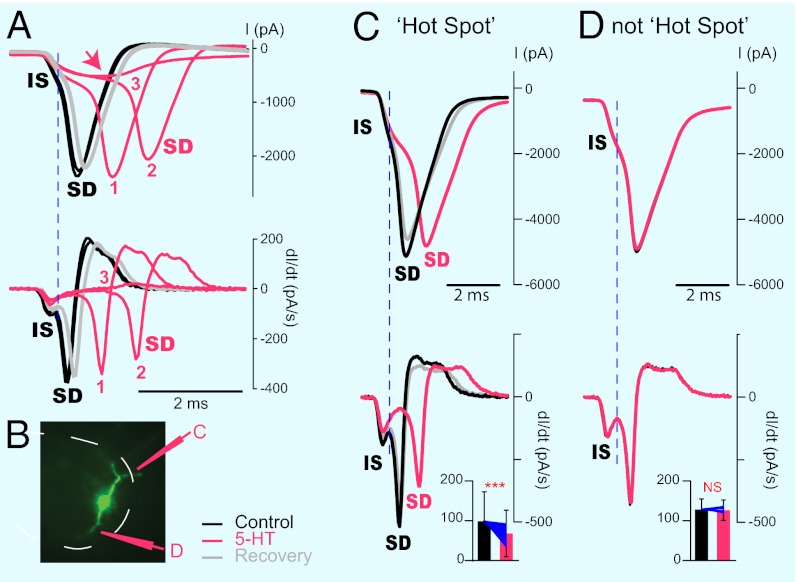Fig. 4.
The current inhibited by 5-HT (15 mM) is responsible for the genesis of APs. (A Upper) Voltage clamp recording of a MN before (black), during (pink: 1, 2, 3), and after puff ejection of 5-HT at the hot spot. (A Lower) First derivative of the current trace. Two peaks were clearly present. Serotonin induced a reduction of the amplitude of the initial peak without changing its latency, whereas it delayed the second peak and eventually annihilated it (3). The peaks correspond to the IS and the SD spike. (B) Picture illustrating the locations of the 5-HT puff electrode. (C Upper) Voltage clamp recording of another MN before, during, and after puff ejection of 5-HT at the hot spot. (C Lower) First derivative of the current trace. The IS spike was inhibited by 5-HT in a reversible manner. Histogram, mean effect of 5-HT or 8-OH-DPAT on the IS peak of the differentiated current trace. Both 5-HT and 8-OH-DPAT significantly inhibited the IS spike (***P < 0.0001, Wilcoxon test, n = 55 spikes). Blue lines, individual measurements normalized to the mean value in control conditions. (D) Recording of the same MN when 5-HT was puffed at another point of the membrane. There, 5-HT had no effect on the IS spike. Histogram, mean effect of 5-HT or 8-OH-DPAT when released at other points of the membrane. No significant difference (P > 0.05; Wilcoxon test; n = 19 spikes).

